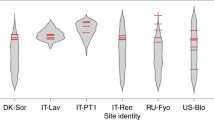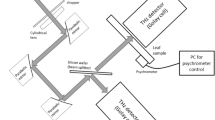Abstract
THE combined process of evaporation from the soil and transpiration from plants is known as ‘evapotranspiration’. The amount of moisture so used varies from place to place and depends mainly on climate (especially temperature and precipitation) and the closeness of the vegetative cover. ‘Potential evapotranspiration’, on the other hand, refers to the amount of moisture which would be utilized if supplies were unlimited and vegetative cover complete. Its value, therefore, alters irrespective of precipitation and vegetation and is a function mainly of length of day, and temperature1.
This is a preview of subscription content, access via your institution
Access options
Subscribe to this journal
Receive 51 print issues and online access
$199.00 per year
only $3.90 per issue
Buy this article
- Purchase on Springer Link
- Instant access to full article PDF
Prices may be subject to local taxes which are calculated during checkout
Similar content being viewed by others
References
See various articles by C. W. Thornthwaite, especially “An Approach towards a national Classification of Climate”, Geog. Rev., 38, No. 1, 55 (Jan. 1948) and “Climate and Moisture Conservation”, Ann. Assoc. Amer. Geog., 37, No. 2, 87 (June 1947).
Author information
Authors and Affiliations
Rights and permissions
About this article
Cite this article
GARNIER, B. A Simple Apparatus for Measuring Potential Evapotranspiration. Nature 170, 286–287 (1952). https://doi.org/10.1038/170286b0
Issue Date:
DOI: https://doi.org/10.1038/170286b0
This article is cited by
Comments
By submitting a comment you agree to abide by our Terms and Community Guidelines. If you find something abusive or that does not comply with our terms or guidelines please flag it as inappropriate.



